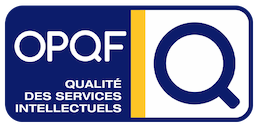Business writing Mixte : présentiel / à distance
Dernière mise à jour : 31/05/2024
Prérequis
Objectifs de la formation
Reflex'English Business writing est une ressource digitale spécifique qui s'adresse aux apprenants de niveau intermédiaire. Elle est composée de 10 modules dédiés au vocabulaire et à la préparation de documents professionnels écrits.
Parmi les sujets traités :
‐ Les mémos : vocabulaire, but, format, rédaction,
‐ Les e‐mails : phrases utiles pour commencer, pour rédiger le corps et pour conclure un e‐mail, format, rédaction,
‐ Les lettres commerciales : les différents types de lettres, phrases utiles, format, rédaction,
‐ Les rapports et comptes‐rendus : vocabulaire utile, format, rédaction,
Description

Lesson 01 ‐ What is a memo?
Description of a memo Use of a memo
Memos vs. formal letters Characteristics of a memo
The format of your memo ‐ the heading section
The format of your memo ‐ the body of the message The style of your memo ‐ materials
The style of your memo ‐ types of memo
Lesson 02 ‐ Writing an effective business memo
Are memos still relevant today? Memos vs. emails
How to write an effective memo Tip No. 1 ‐ Know your audience
Tip No. 2 ‐ Clearly state the purpose of your memo Tip No. 3 ‐ Plan before you take action
Tip No. 4 ‐ Present the main point first
Tip No. 5 ‐ Enclose only appropriate information Tip No. 6 ‐ Proofread the memo
Tip No. 7 ‐ Read your memo out loud The ultimate checklist
Lesson 03 ‐ Useful sentences to open an email
Writing emails Opening salutations
Copying someone in on your email Forwarding an email
Friendly start
Referring to previous contact or meeting Saying thank you
Stating the reason for writing the email Following up a previous exchange Apologising for the delay of the reply
Lesson 04 ‐ Useful sentences to write the main body of the email
Writing emails
Attaching a document to your email
Additional elements and important information Requests and enquiries
Asking for clarifications Giving information
Getting and giving approval Making or changing arrangements Making complaints
Apologising Giving bad news
Lesson 05 ‐ Useful sentences to close an email
Writing closing lines
Offering further help or information Expecting a reply
Mentioning the next contact Expressing thanks Apologising once again Social closing lines Complimentary closes
Lesson 06 ‐ Writing effective emails
About emails
Using an email programme Basic structure of an email
Tip N°1 ‐ Identify the purpose of the email Tip N°2 ‐ Identify your audience
Tip N°3 ‐ Have a compelling subject line
Tip N°4 ‐ Start with an appropriate greeting Tip N°5 ‐ Keep your message short and concise
Tip N°6 ‐ Pay attention to the tone of your email Tip N°7 ‐ Be consistent with your font
Tip N°8 ‐ Write a simple closing Tip N°9 ‐ Proofread and follow up
Tip N°10 ‐ Differences GB/US English
Lesson 07 ‐ Types of Business letters
What is a business letter? Cover letters
Letters of recommendation Follow‐up letters
Letters of resignation Termination letters Invitation letters
Letters of complaint Apology letters
Sales letters Order letters Letters of thanks Request letters Inquiry Letters
Lesson 08 ‐ Writing effective business letters
Sending a letter by post
The appropriate format: heading, main body, ending The appropriate spacing and font
The appropriate style Writing business letters
Lesson 09 ‐ Useful vocabulary to write a business report
Writing business reports Useful linking words Useful vocabulary
Beginning the report
The structure of the report Methodology and findings Expressing opinions Reporting what was said Comparing elements Giving examples
Drawing conclusions from the report Giving recommendations
Lesson 10 ‐ Writing effective business reports
What is a business report?
Who and what are business reports for? The different types of business reports The structure of a report
Useful tips to write a business report Writing effective business reports Business writing ‐ Conclusion
